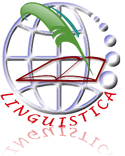INTERPERSONAL METAPHOR IN MATA NAJWA™S TALK SHOW
DOI:
https://doi.org/10.24114/jalu.v2i1.711Abstract
ABSTRACT This study investigate interpersonal metaphor in Mata Najwa™s talk show texts. Three are reasearch problems are raised, namely 1) What types of grammatical metaphors are used in Mata Najwa™s talk show. 2) How is interpersonal metaphor coded in Mata Najwa™s talk show. 3) In what contexts are the interpersonal metaphors coded as they are in Mata Najwa™s talk show. The analysis based on interpersonal metaphor as developed in Systematic Functional Linguistics (SFL). Specifically, dealt with interpersonal metaphor, in this study consist of two types, namely, metaphor of mood and metaphor of modaly. The total calculations are the metaphor of mood in Sang Penantang is about 94.85% and metaphor of modality is about 5.14%. The metaphor of mood in Sengatan Dahlan is about 95.34%and metaphor of modality is about 4.65%.In the investigating metaphor of mood is the dominant because the message of the sentences in political interaction used the patterns of mood which are seen as carrying the burden for making the different interpretation in the contextual occurences. Keyword: Interpersonal Metaphor, Talk show.Downloads
Issue
Section
Articles
License
Copyright (c) 1970 Elisa Perdana, Amrin Saragih

This work is licensed under a Creative Commons Attribution-ShareAlike 4.0 International License.
Authors who publish with this journal agree to the following terms:
- Authors retain copyright and grant the journal the right of first publication with the work simultaneously licensed under a Creative Commons Attribution License that allows others to share the work with an acknowledgment of the work's authorship and initial publication in this journal.
- Authors are able to enter into separate, additional contractual arrangements for the non-exclusive distribution of the journal's published version of the work (e.g., post it to an institutional repository or publish it in a book), with an acknowledgment of its initial publication in this journal.
- Authors are permitted and encouraged to post their work online (e.g., in institutional repositories or on their website) prior to and during the submission process, as it can lead to productive exchanges, as well as earlier and greater citation of published work (See The Effect of Open Access).
- This work is licensed under a Creative Commons Attribution-ShareAlike 4.0 International License.

